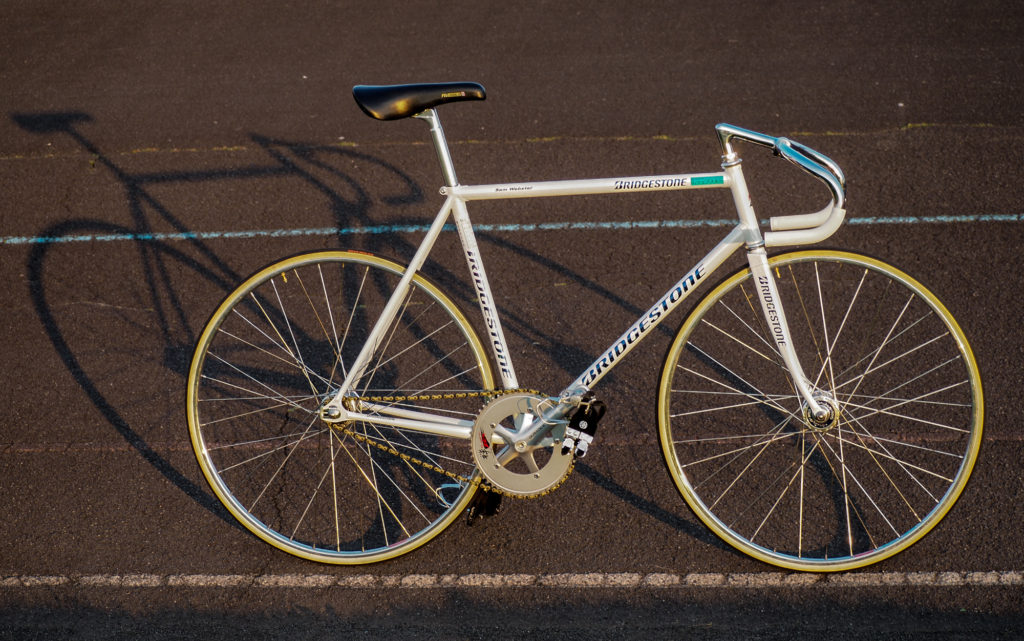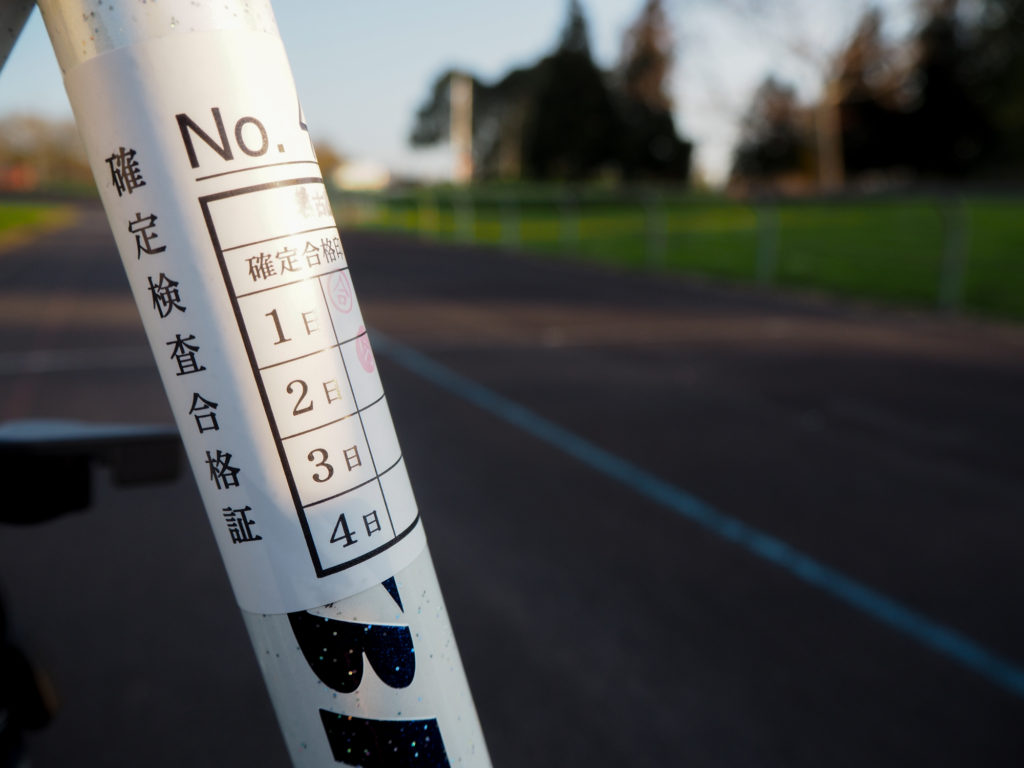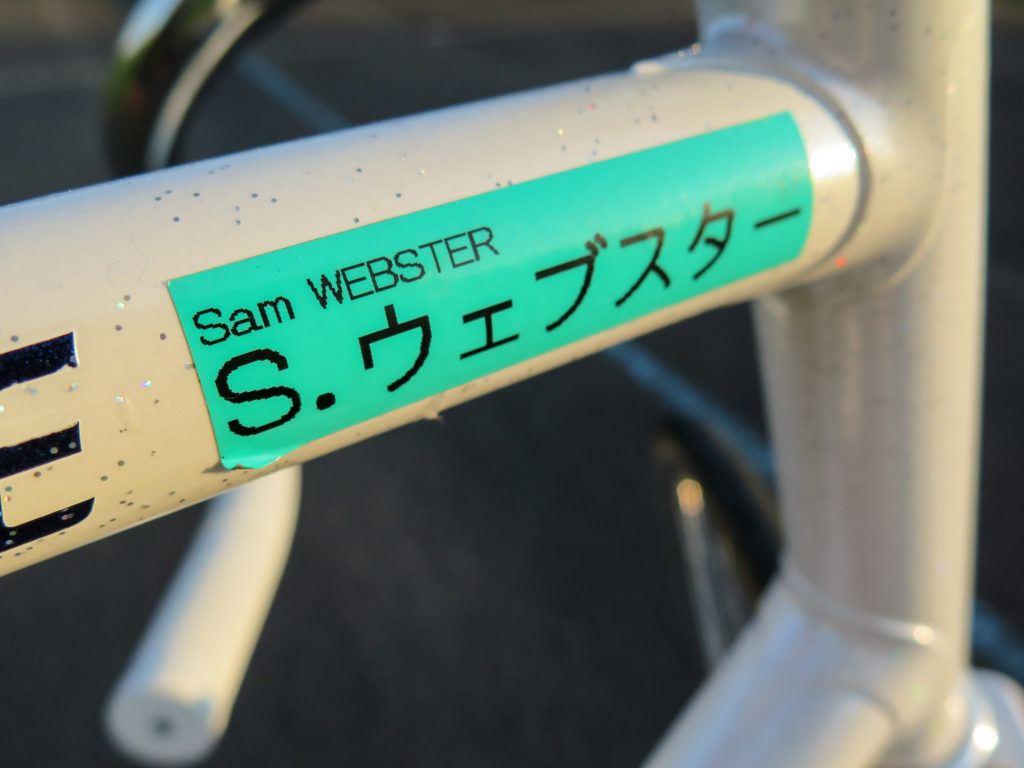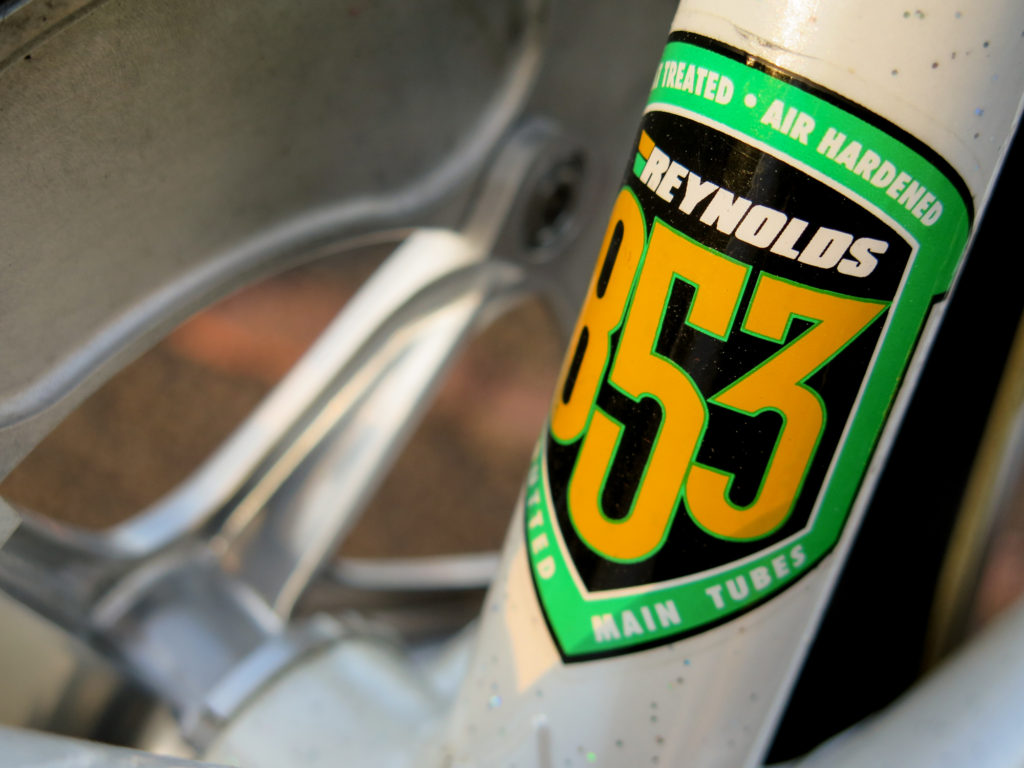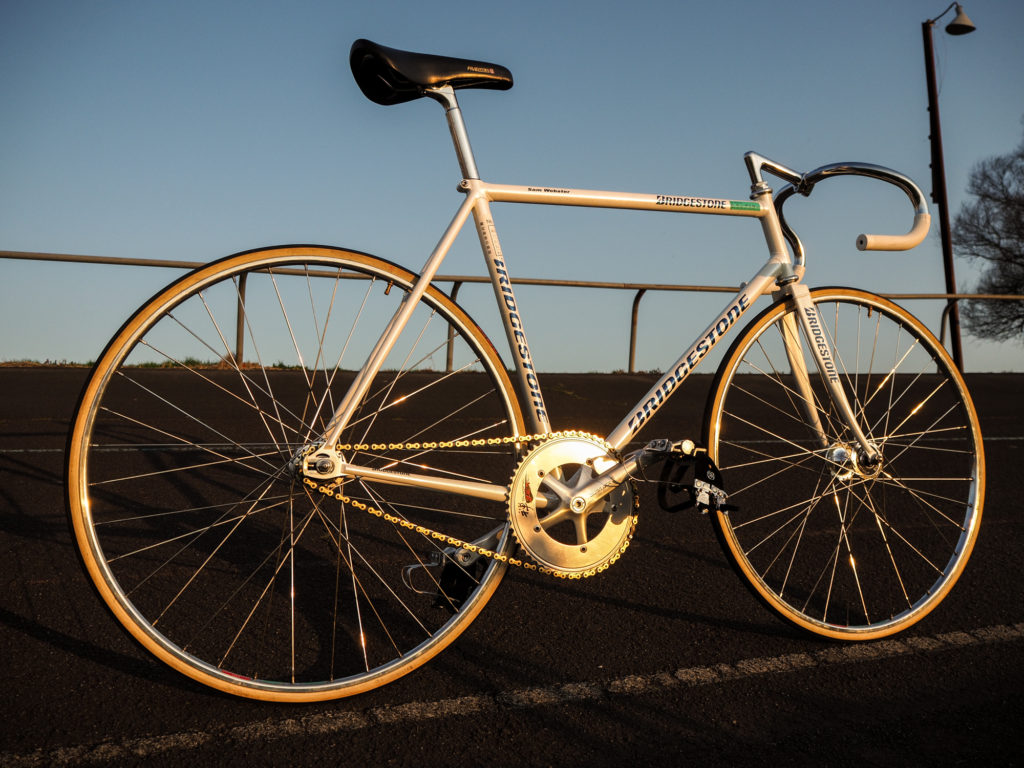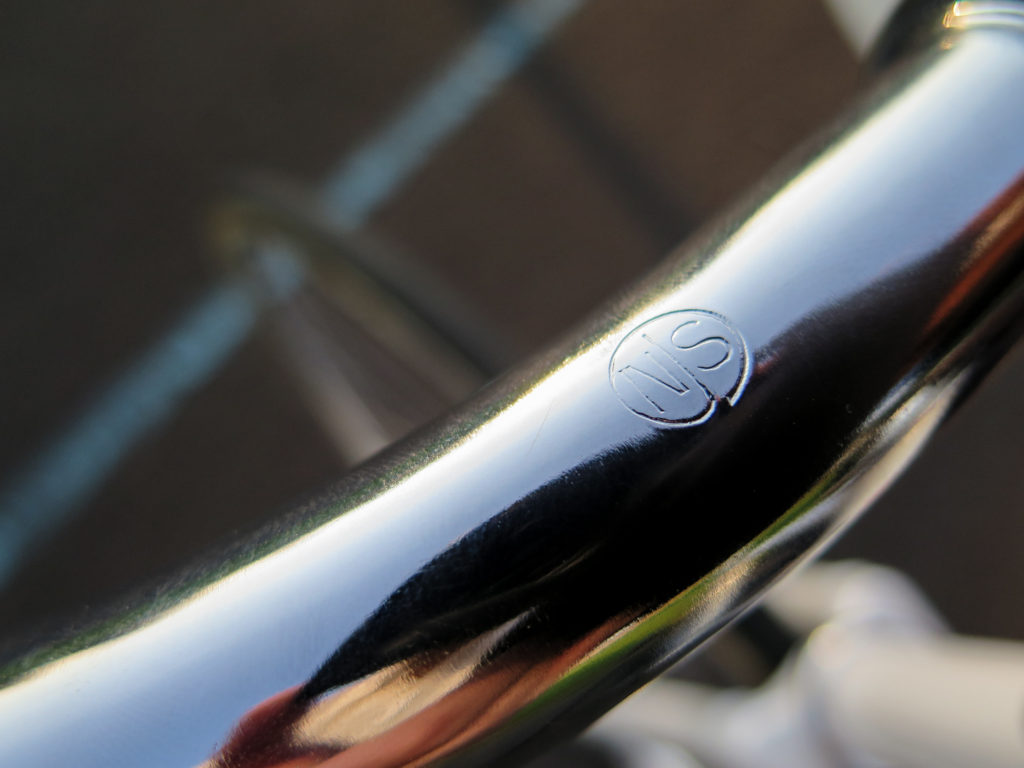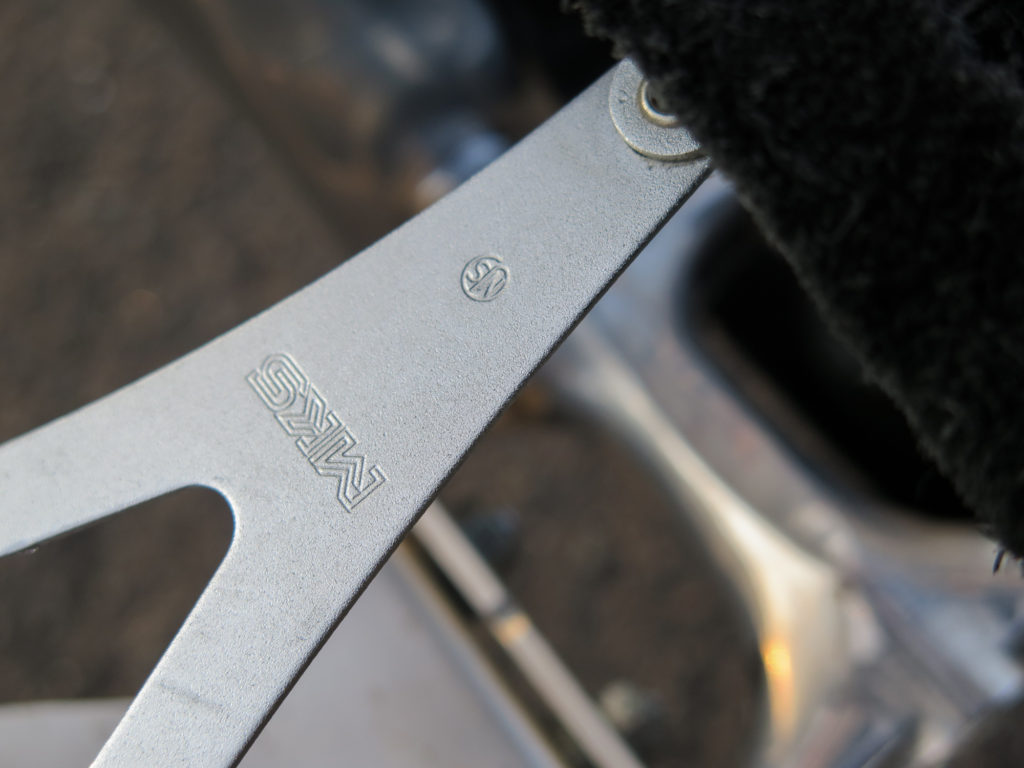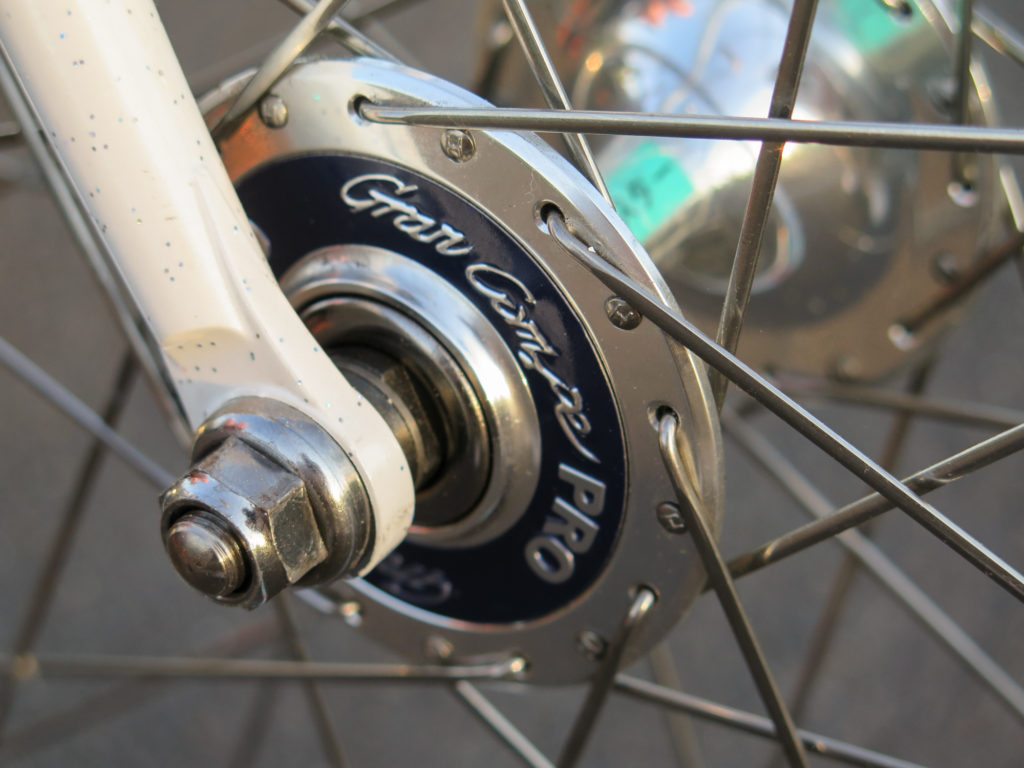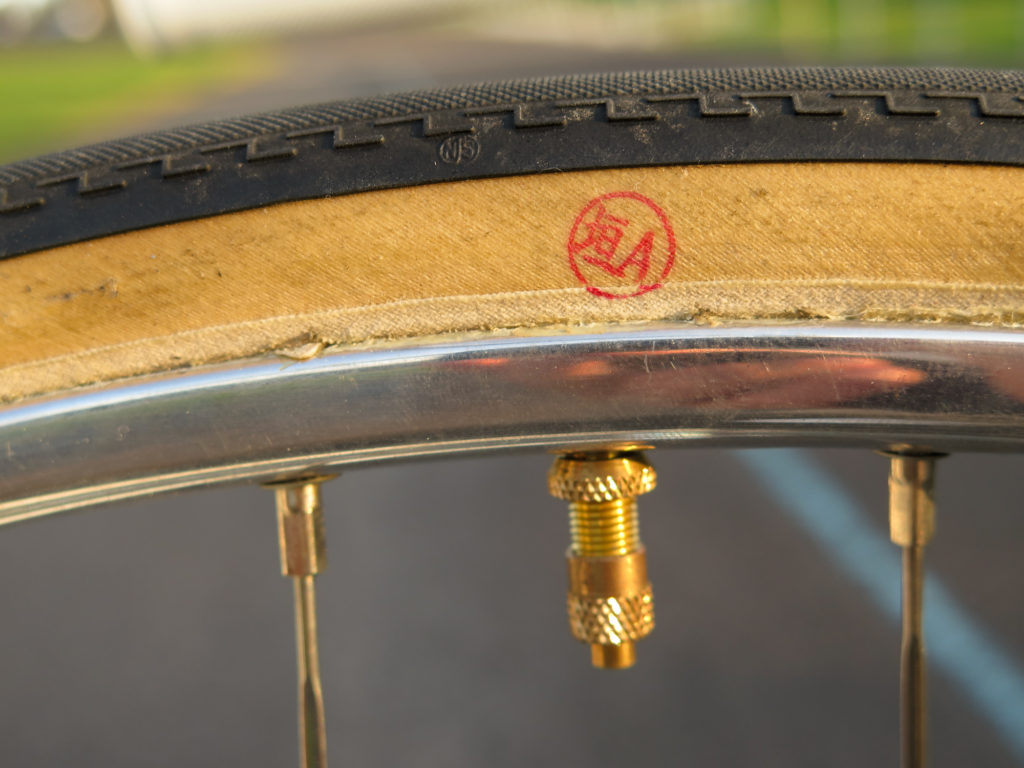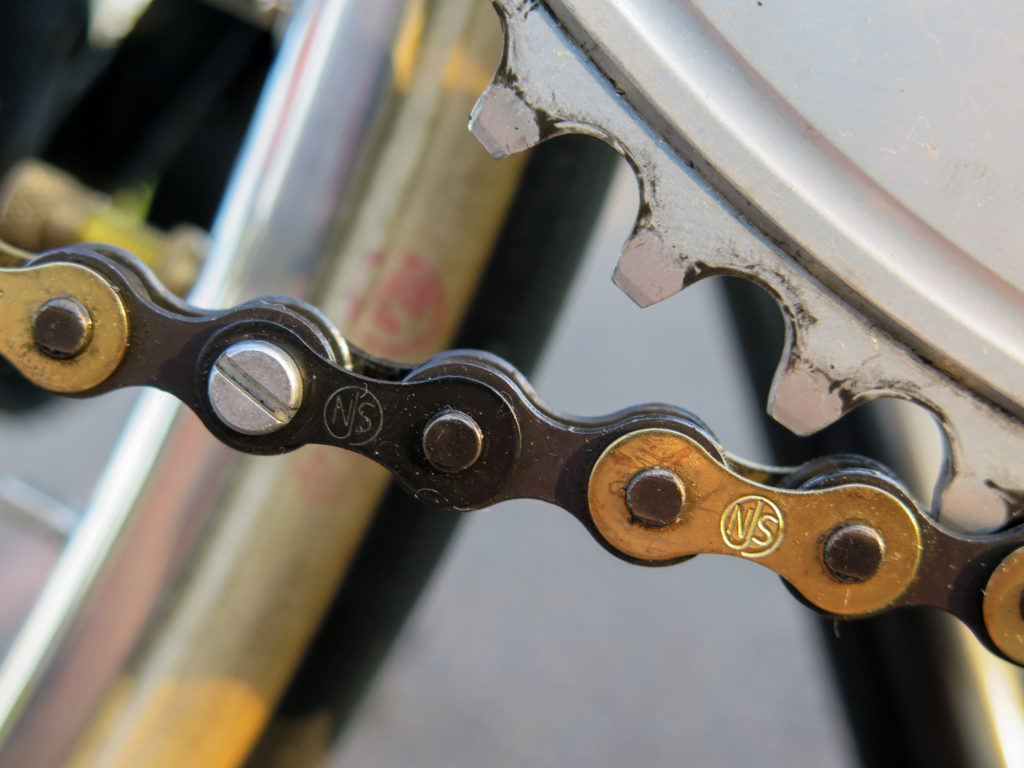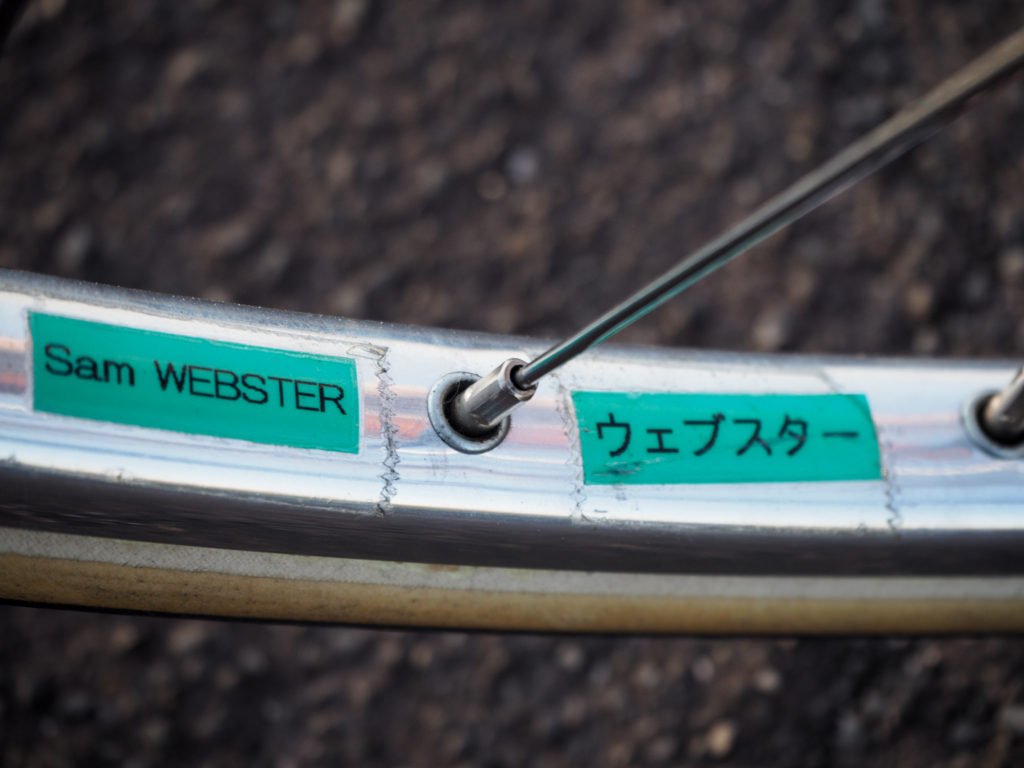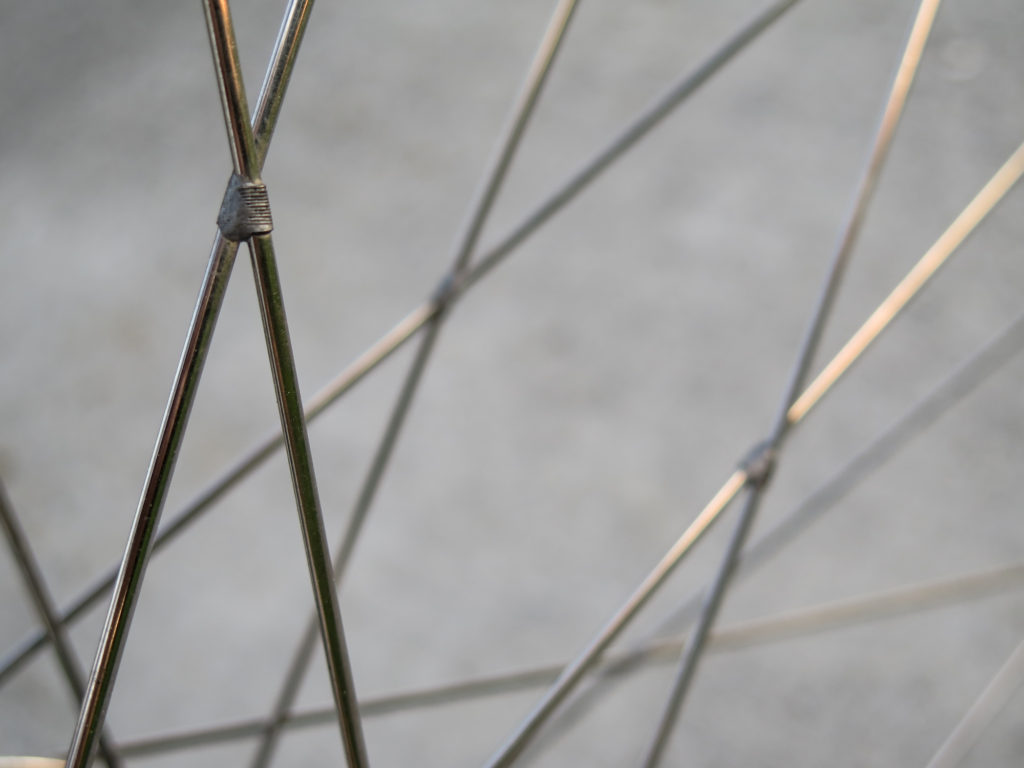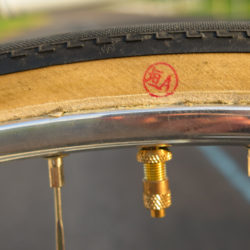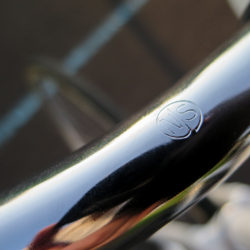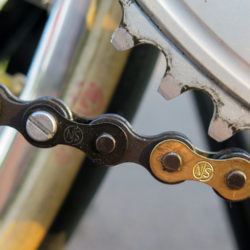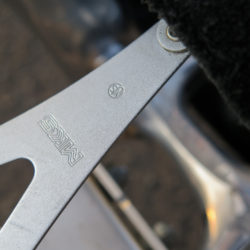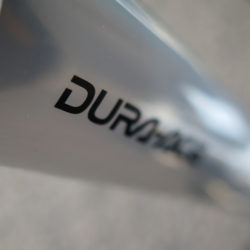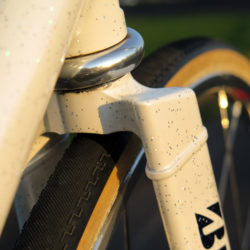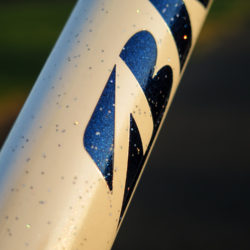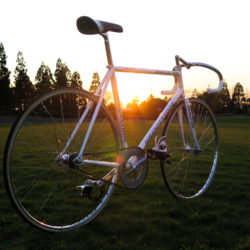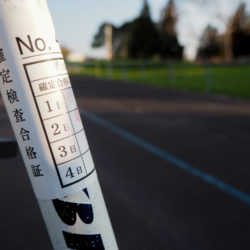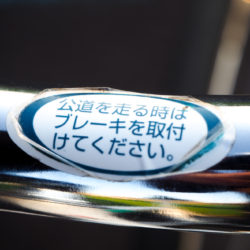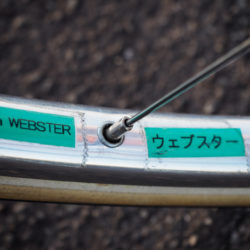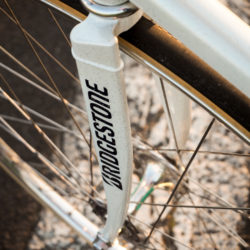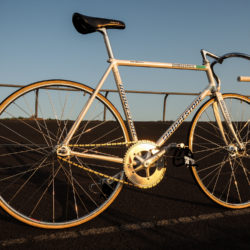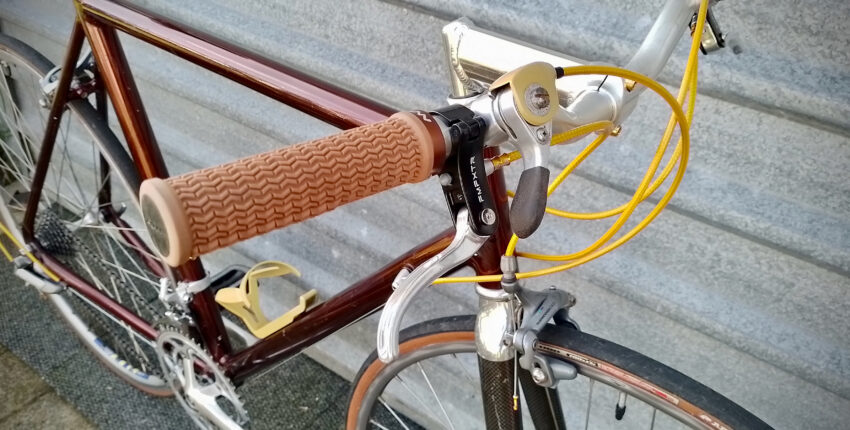Insider Rides: Webster San
For this instalment of Insider Rides Sam Webster talks us through his bespoke Miura-san Bridgestone after returning from his second trip on the prestigious Keirin circuit.
“Everyone’s in the same boat, and that’s the one thing with Japanese Keirin, everyone has the same equipment within their strict specification, even your helmet and your jersey. So it does even out the playing field.
“For this build I sent all of the dimensions over that I wanted, and then they tell you if you can or can’t have them depending on the regulations.
“Firstly, I was able to specify the length of the top tube, which is pretty important. I chose to come in a little bit shorter in the top tube than my standard track bike because of the nature of it being full contact, as I didn’t want as much length over the front wheel. I also didn’t want a big flexy farm gate so where I could I brought the size down.
“I think this is a 59 top tube from memory, whereas I normally ride a 61, and I also made sure I kept the headtube as small as I could, again purely for stiffness to try to keep everything nice and tight and close.
“I went with Reynolds 853 tubing, and then essentially making sure I had the stiffest I could by specifying the biggest tubing allowed too. The down tube and top tube are both a little bit different in size, opposed to normally being the same, my down tube that little bit fatter. All the time just pushing what I could get in terms of the stiffest frame possible. I then chose the Columbus ‘aero’ fork, which is aero as a steel fork can be there.
“Absolutely every component has to have the NJS stamp [Nihon Jitensha Shinkokai, the Japan Keirin Association], and it’s all heavily regulated and checked. I chose the Kashimax saddle, one of only two choices, the other is pretty much a plastic shell with a leather covering.
“The seatpost, bars and stem are all Nitto. You can have deep or shallow drop bars, both the same bend, but you can have various widths. I ride a 33 for UCI, so I kept that very similar with these 34cm handlebars, which is the narrowest available; I think the widest was 40. You can change the stem length and play around with that, and it did take a wee while just to get the feel for it, plus the frame dimensions that you say you’d like and what you end up getting are a little bit different anyway.
“Standard Dura-Ace crank and Sugino chainring, MKS pedals, who are the only pedal provider, which I then blinged out with an aluminium toecage so the fit is a little bit snug.
“I had the legendary frame and wheelbuilder Nagasawa-san build my wheels for me. Gran Compe hubs, bladed spokes and Araya rims, which is different to usual as most people would have Dura-Ace hubs, but based on the advice of Nagasawa-san I went down the Gran Compe route, and am really happy with them.
“There are two types of tyres allowed, the standard tyre and a rain tyre, and that’s it. Your tyres get inspected every race and in 2017 when I was there my tyres managed to last me the whole season without having to replace them as I took very good care of them.
“This year at my first race though I had to get my tyres changed because they’d perished a little just sitting in the garage back in New Zealand. I took my wheels to the mechanic to change them, you are not allowed to do that yourself, and he was profusely arguing that I needed to have a rain tyre on the front and a standard tyre on the rear, supposedly because it was better and faster and less rolling resistance with that combination. I let him do it and hey, my tyres lasted me the season again.
“I went over straight from the Commonwealth Games, from a carbon fibre frame with an integrated handlebar, disc wheels, a one-piece pair of cranks, a carbon fibre railed saddle; so you can play around with the specifications all you want but it’s still very different, completely different to be honest. There is so much give and flex in the bike that you actually have to preload the bike by pushing in the seat very hard before you stand to accelerate because of the incredible flex there. We call it a tank slapper as the top tube is bouncing off your abductors because there is so much flex when you are trying to accelerate.
“But it’s an incredibly unique environment and Japan holds a special place in my heart now after racing two years up there. It’s such a nice life style to be racing your bike professionally, to go to some incredible cities and see some incredible sights, it’s a very cool experience. Plus, going back to everyone being on very similar equipment is just like when you first start; old steel frames probably from the 70’s, half expecting a tube to pop out of the lugs, and being back racing outside under lights at night again was pretty cool. I am so glad that I took the opportunity and took the chance for the life experience because it grounded me back to being the kid that I was when I was 16 and just loving riding my bike.
“In the High Performance environment we chase every little gain that we can, and that for me is everything, but to go back and have those feelings when you can laugh and just go out and just smash it, just give it your best and see what happens, to have that was really refreshing. I think a lot of people find that over the years they start to lose passion or some of their love for the sport, whereas I feel that it’s always evolved and to have that experience in Japan it does feel like my career has started again – like it’s gone full cycle now. Going back to the basics, trying to re-visit everything and build my way back up so there’s no stone left unturned going into Tokyo and further.”

